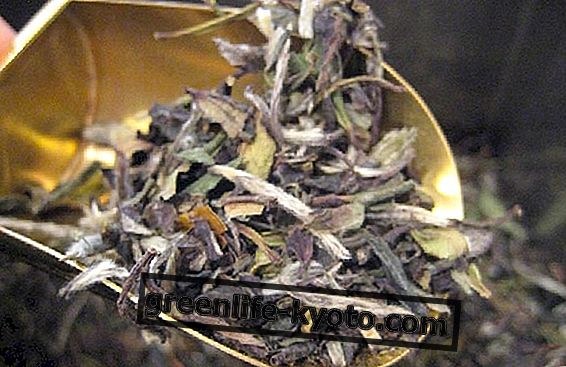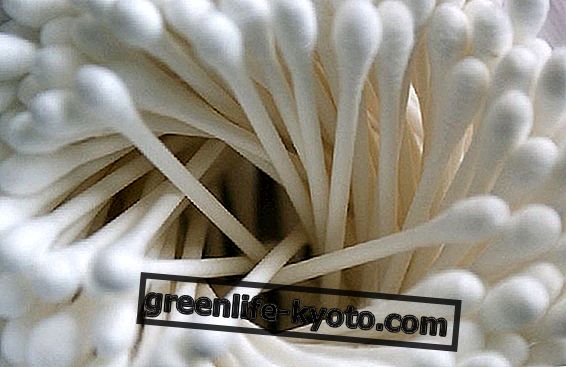
The calendula is a herbaceous plant of the Asteraceae family and includes about thirty different species. It grows spontaneously in the European area, in the Mediterranean area, in North Africa and in South Asia. In uncultivated fields and meadows, along roadsides and under orchards as well as in olive groves, marigold grows wild up to 600 meters above sea level.
The calendula plant
Calendula is an annual or perennial herbaceous plant with an upright growth habit that reaches 70 centimeters in height. Its stem is a bit rectangular and angular and is covered with hairs as well as the leaves, which are densely covered with down.
The shape of the leaves is spatulated with a convex apex and with a slight tip just at the end, their margin is whole or slightly wavy, they are sessile and therefore have no small. The leaves are born in the shape of a basal rosette from which the stems that form the flowers rise centrally.
The marigold flower is similar to the daisy but completely orange in color although some varieties turn to white or gold. The botanical name of this inflorescence is head and therefore it is composed of central tubular flowers and external ligulate flowers arranged in a radial pattern. The size is about 1 or 2 centimeters and the flowering accompanies the arrival of summer to continue until late autumn.
The best known varieties of calendula are the Calendula officinalis, which from the name already indicates that it is the one used for preparations for herbal medicinal use, and Calendula arvensis, or spontaneous calendula which is found in bloom from June to November in the meadows in Italy.
Calendula cultivation
Calendula is a plant that loves being in the sun, although some varieties grow without problems in a half-shade position. The calendula is rustic and adapts well to the situations so it is a good ornamental plant that can be grown in the garden or on the terrace.
On the contrary it is not a houseplant or to be kept indoors, precisely because its natural growth habitat requires air and direct exposure to the sun.
The best soil for the growth of calendula is rich in humus, light, little acid and absolutely well drained because the calendula just does not tolerate stagnant water . In fact, the waterings must be well calibrated to avoid that the earth remains too moist and can give rise to the attack of fungal diseases, mold or other towards the roots of the plant.
For the cultivation in pot it will therefore be sufficient to remove the water from the saucer after watering and always wait for the soil to be dry between one watering and the next. Water is important during the flowering period while watering can become less regular for the rest of the time.
It is usually cultivated by sowing its seeds directly, which can be bought in the agricultural sector, in herbal medicine or in other specialized shops. With a temperature of around 15 ° C and after about 2 weeks, seed sprouting will begin.
Once the seedlings have grown, it will be necessary to thin them, keeping about 6 or 8 per square meter. The plant cycle is around 4 months and the flowers are harvested regularly throughout the summer.
The eudermic properties of marigold oil
The uses of calendula
The calendula plant uses flowers and the balsamic period for their collection is as soon as they have blossomed because they contain all the active ingredients beneficial for the body.
The marigold, once harvested, is dried for the preparation of impromptu herbal teas or for extractions such as oils, creams and ointments.
The decoction is useful in case of gastric ulcer and canker as well as to relieve menstrual pain .
The calendula mother tincture is also used with the same effects of decongestant, anti-inflammatory and antispasmodic in the case of menstrual pain.
In cosmetic and herbal products for external use we find calendula when there is need to burn the skin and soothe the skin . Even in case of slight burns and burns or redness and dermatitis it is an excellent natural remedy thanks to its decongestant capacity.
The calendula is also used in the preparation of dishes based on edible flowers, the buds of its flowers can be preserved in salt becoming similar to capers.
As a decorative flower, but also in peasant recipes, it is one of the most widely used edible flowers and has a particular and pleasant taste that goes well with mixed raw salads or simply sautéed with onion and other flowers to flavor pasta or hot rice.
Finally, marigold is used to dye natural fabrics and is a rustic plant that can be very pleasant in our garden with its intense orange color spots.













